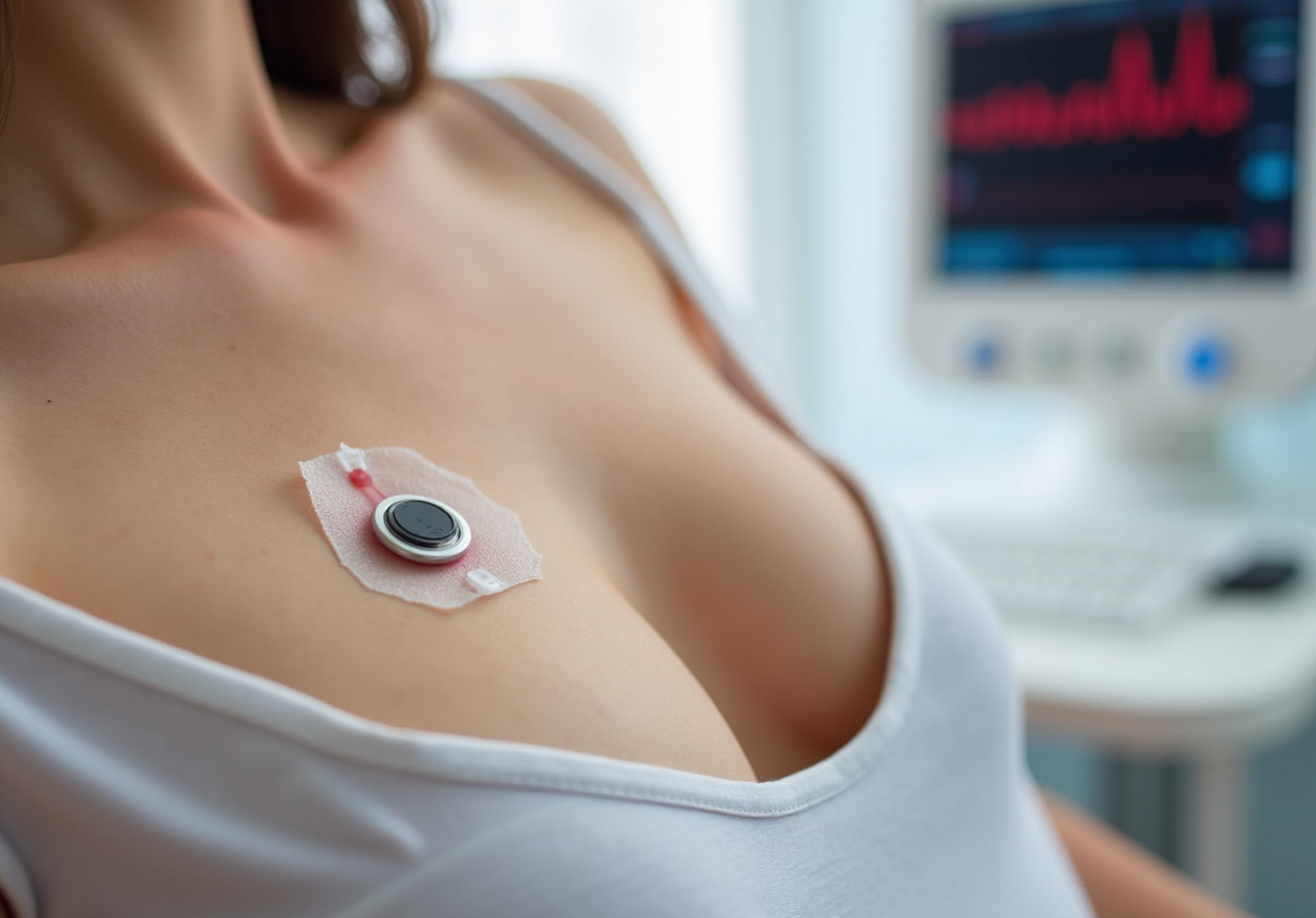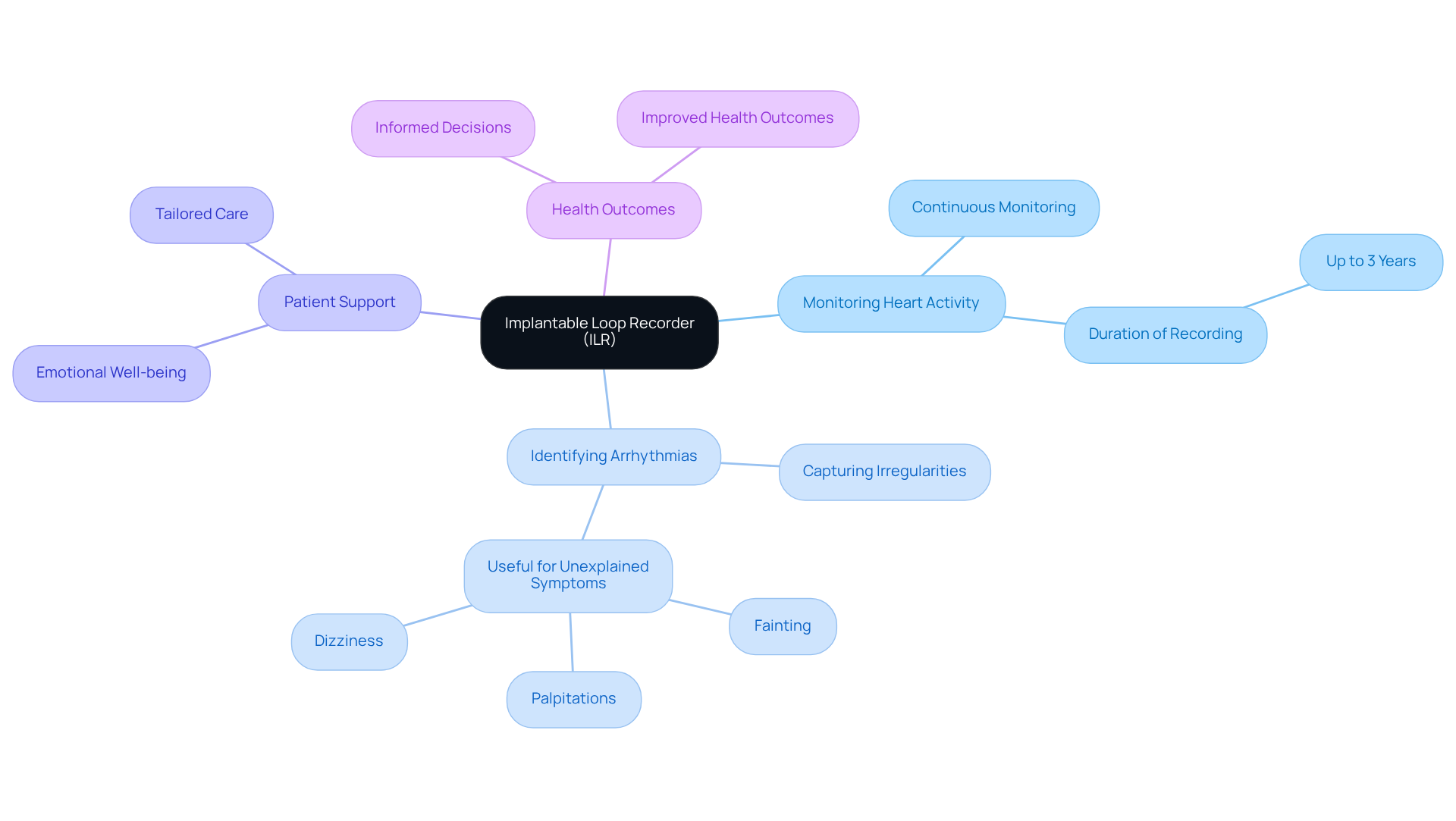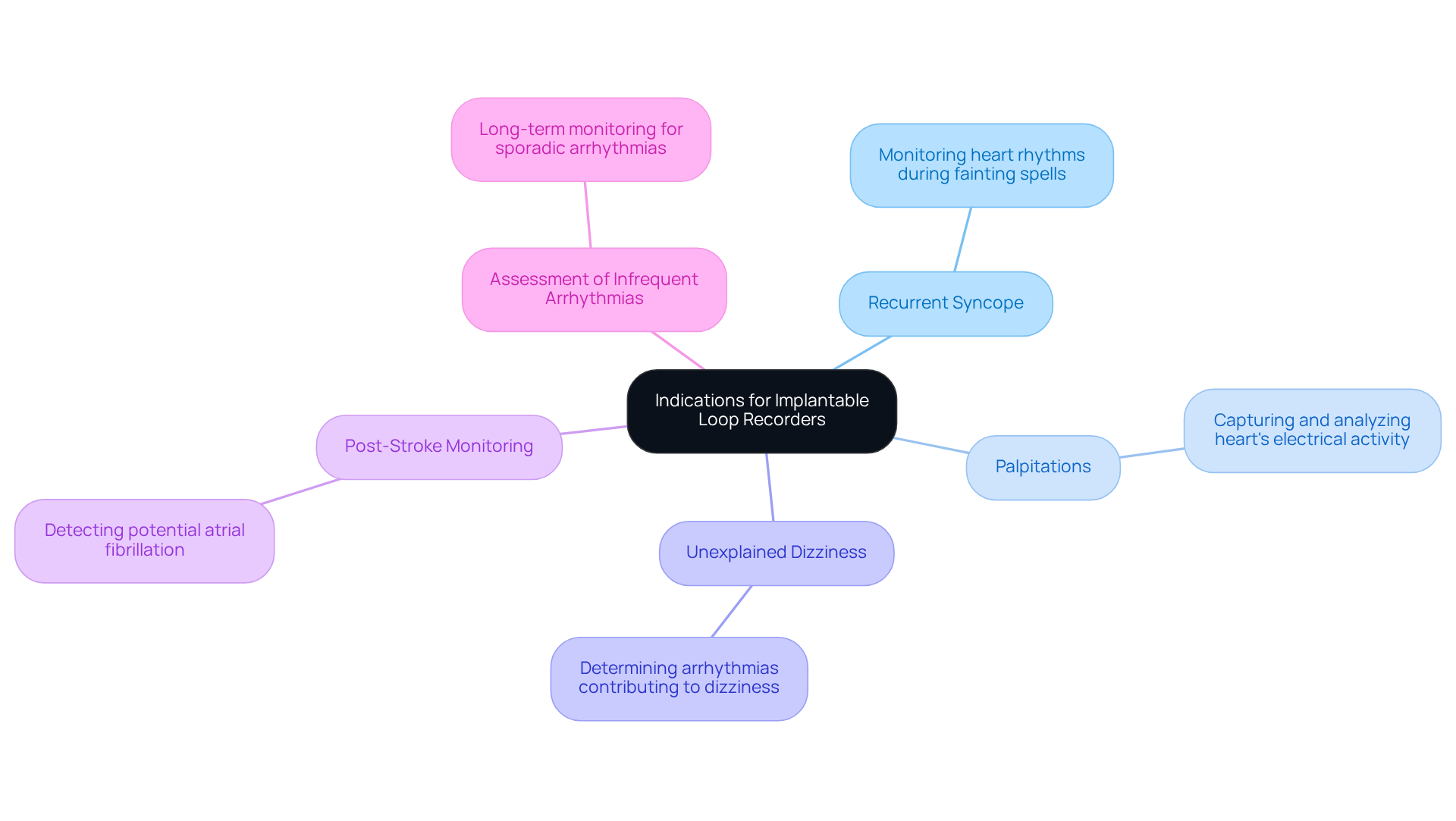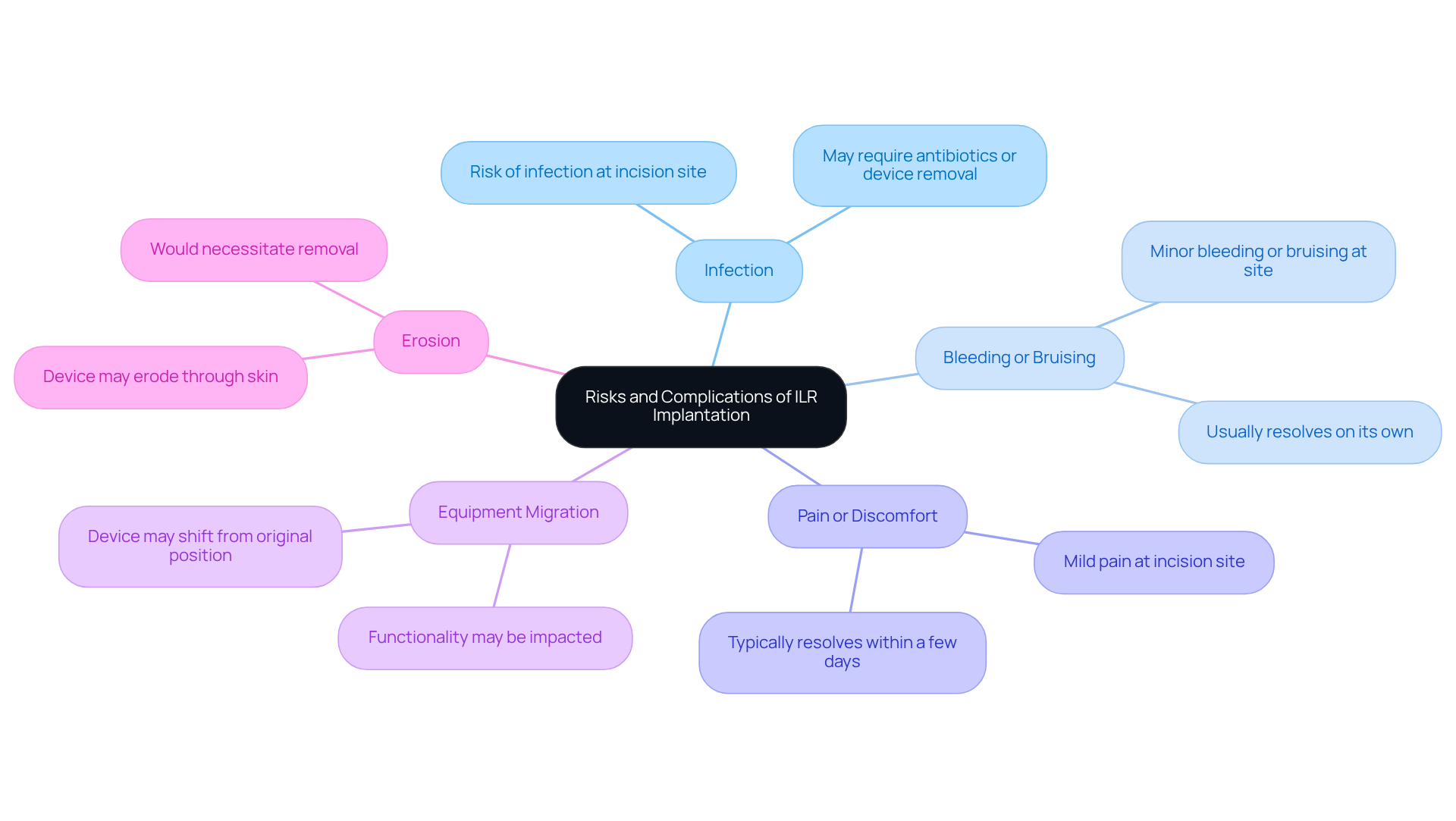


This article highlights the important role of Implantable Loop Recorders (ILRs) in cardiology. These devices are designed to continuously monitor heart activity, which can be particularly helpful for diagnosing intermittent arrhythmias in patients who are experiencing unexplained symptoms. By understanding how ILRs work, you can feel more empowered in your health journey.
Have you ever felt uncertain about your heart health? ILRs serve as a valuable tool for healthcare providers, allowing them to make informed treatment decisions based on continuous heart monitoring. This can bring peace of mind, knowing that your heart's activity is being observed closely.
The implantation procedure for ILRs is straightforward, and aftercare is designed to ensure your comfort and safety. While there are associated risks, your healthcare team will provide comprehensive support to address any concerns you may have. Remember, you are not alone in this process; there are professionals ready to guide you every step of the way.
In addition to this, consider how having an ILR can help you and your loved ones feel more secure about your heart health. If you have questions or need support, don’t hesitate to reach out to your healthcare provider. They are there to help you navigate these important decisions with compassion and care.
Implantable Loop Recorders (ILRs) are a remarkable advancement in cardiac monitoring, providing both patients and healthcare providers a deeper understanding of the heart's electrical activity over extended periods. For individuals experiencing unexplained symptoms like fainting or palpitations, these small devices offer vital data that can lead to accurate diagnoses and more effective treatment plans.
However, we recognize that the journey of understanding ILRs can bring about questions and concerns, especially regarding their implantation process and potential risks. What should you know before considering this innovative solution for your heart health challenges? Rest assured, we are here to support you every step of the way.
An Implantable Loop Recorder (ILR) is a small, subcutaneous device that is gently placed under the skin of the chest. Its purpose is to continuously monitor the electrical activity of your heart, providing valuable insights into your ilr cardiology health. This device records pulse rhythms over extended periods, typically lasting up to three years, making it particularly useful for identifying arrhythmias that might not show up during standard ECG tests.
If you’ve been experiencing unexplained symptoms like fainting, palpitations, or dizziness, the ILR can offer a comprehensive account of your heart's activity. By capturing these irregularities, ilr cardiology provides your healthcare provider with crucial information that can lead to informed decisions regarding your diagnosis and treatment. This can ultimately help improve your health outcomes.
We understand that the idea of an implantable device might feel daunting, but rest assured, you are not alone in this journey. The ILR is designed to support you and your healthcare team in understanding your heart better, allowing for more tailored care. If you have any questions or concerns, please don’t hesitate to reach out for support—your health and peace of mind are our top priorities.

ILR cardiology can be a valuable tool for patients experiencing symptoms that suggest intermittent arrhythmias, especially when other diagnostic methods have not provided the answers they seek. If you or a loved one are facing these challenges, it's important to know that you are not alone. Here are some common indications for considering an ILR:
We understand that navigating health concerns can be daunting, but please remember that support is available. If you have any questions or would like to discuss your symptoms further, do not hesitate to reach out for help.

The implantation of an ILR cardiology device is typically performed as an outpatient procedure and takes about 20-30 minutes. We understand that this may feel daunting, so let’s walk through the process together:
Aftercare Instructions:

While Implantable Loop Recorders can be a valuable tool for monitoring heart health, it’s important to understand that, like any medical procedure, there are potential risks and complications associated with their implantation. You might be wondering about what these risks could be, and it’s completely normal to have concerns. Here are some key points to consider:
We encourage you to stay informed about these risks and to reach out to your healthcare provider if you notice any unusual symptoms. Regular follow-ups are essential, not just for monitoring the device’s performance, but also to ensure your peace of mind. Remember, you are not alone in this journey; your healthcare team is here to support you every step of the way.

An Implantable Loop Recorder (ILR) is not just a medical device; it is a compassionate ally in the journey of heart health. Designed to monitor heart rhythms continuously, the ILR provides invaluable insights that can significantly enhance patient care. By capturing the electrical activity of the heart over extended periods, it helps in diagnosing conditions that may remain hidden through standard testing methods. This innovative technology empowers both patients and healthcare providers to make informed decisions about treatment and management of heart-related symptoms.
In this guide, we have explored essential aspects of ILR cardiology, including:
Whether addressing symptoms like fainting and palpitations or ensuring proper follow-up care, the ILR stands as a comprehensive solution for those navigating unexplained heart issues. Understanding these elements not only demystifies the process but also underscores the importance of continuous heart monitoring, providing reassurance that support is available.
Ultimately, the significance of Implantable Loop Recorders transcends their technical functionality; they embody a commitment to patient-centered care and proactive health management. If you are experiencing unexplained cardiac symptoms, reaching out to a healthcare provider about the potential benefits of an ILR can be a vital step toward achieving better heart health. Embracing this technology can lead to improved outcomes and a deeper understanding of your cardiac health journey. Remember, you are not alone on this path; support and guidance are just a conversation away.
What is an Implantable Loop Recorder (ILR)?
An Implantable Loop Recorder (ILR) is a small, subcutaneous device placed under the skin of the chest to continuously monitor the electrical activity of the heart.
What is the purpose of an ILR?
The purpose of an ILR is to provide valuable insights into heart health by recording pulse rhythms over extended periods, typically lasting up to three years, and identifying arrhythmias that may not be detected during standard ECG tests.
Who might benefit from an ILR?
Individuals experiencing unexplained symptoms such as fainting, palpitations, or dizziness may benefit from an ILR, as it captures irregularities in heart activity that can inform diagnosis and treatment.
How does an ILR help healthcare providers?
By capturing and recording the heart's activity, the ILR provides healthcare providers with crucial information that can lead to informed decisions regarding a patient's diagnosis and treatment, ultimately improving health outcomes.
Is it normal to feel apprehensive about having an implantable device?
Yes, it is common to feel daunted by the idea of an implantable device. However, the ILR is designed to support patients and their healthcare teams in understanding heart health better and enabling more tailored care.
What should I do if I have questions or concerns about the ILR?
If you have any questions or concerns about the ILR, it is encouraged to reach out for support, as your health and peace of mind are top priorities.